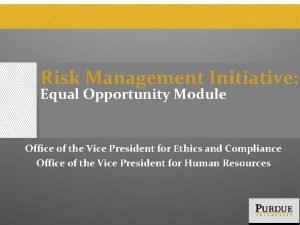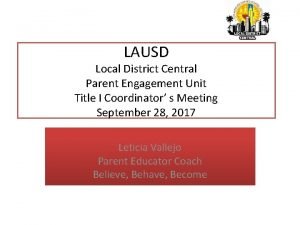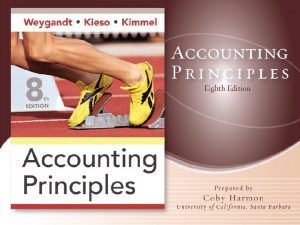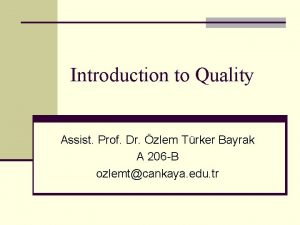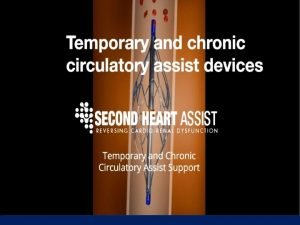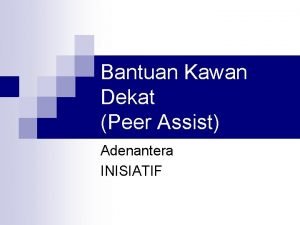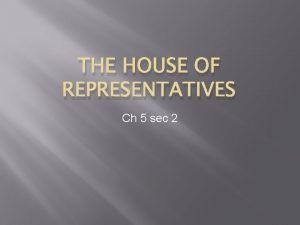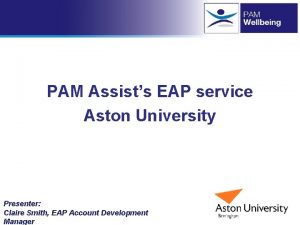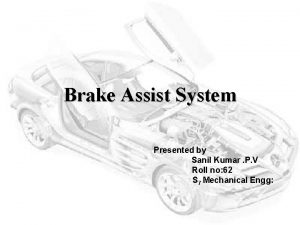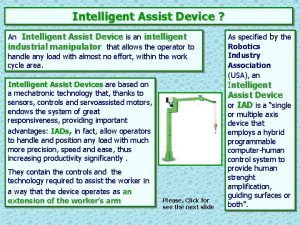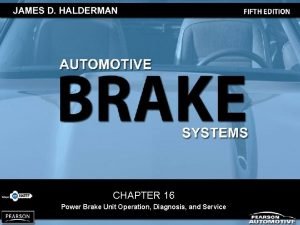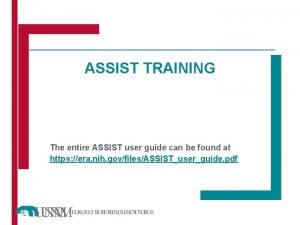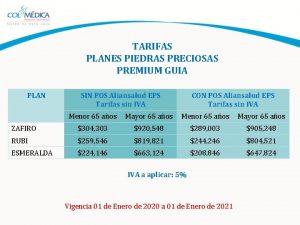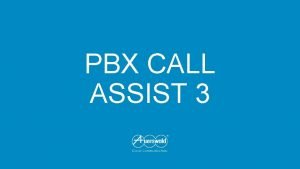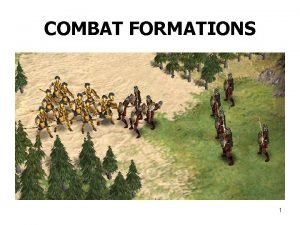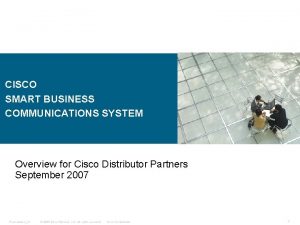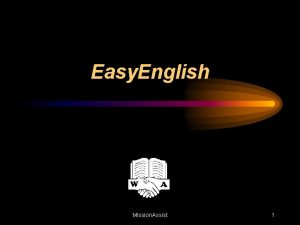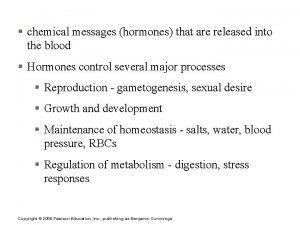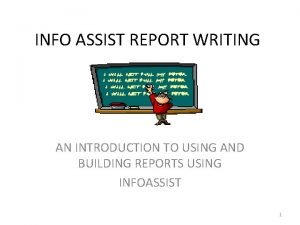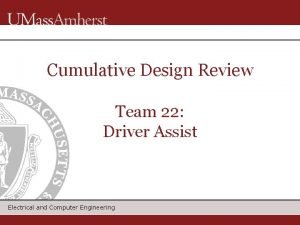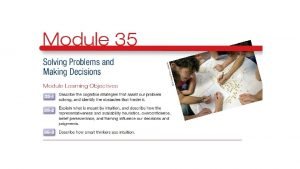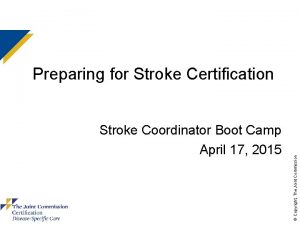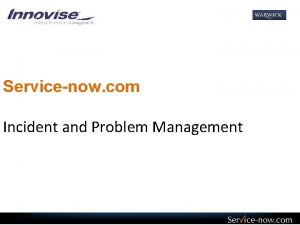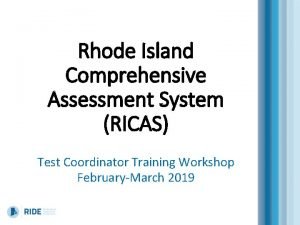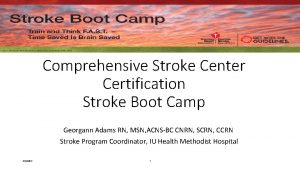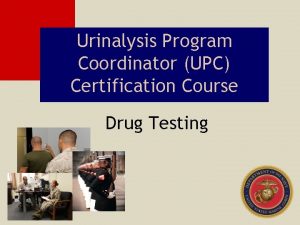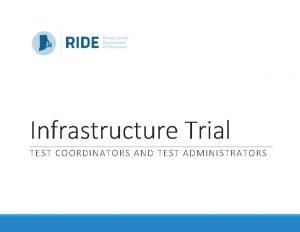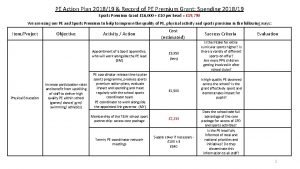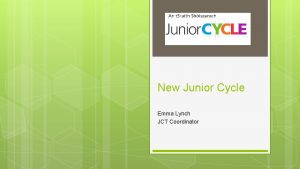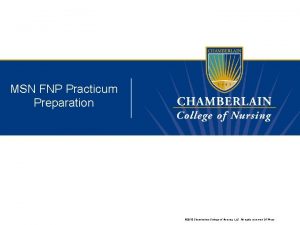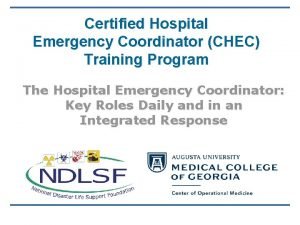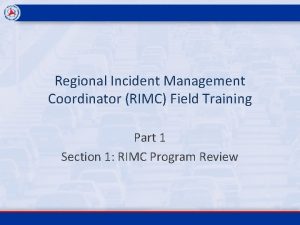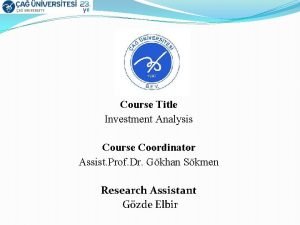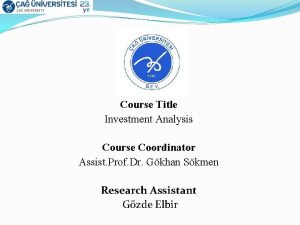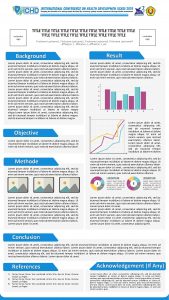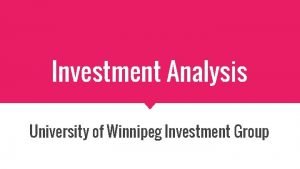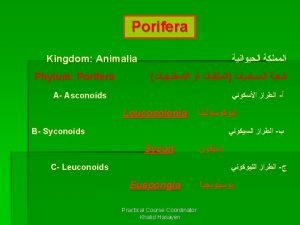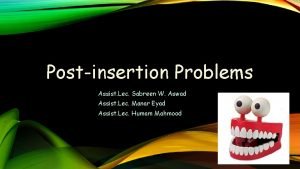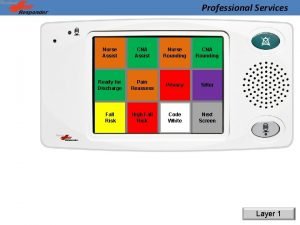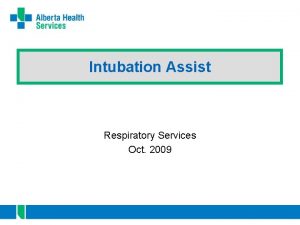Course Title Investment Analysis Course Coordinator Assist Prof







































































- Slides: 71

Course Title Investment Analysis Course Coordinator Assist. Prof. Dr. Gökhan Sökmen Research Assistant Gözde Elbir

Learning Objectives After studying this chapter; �You will be able to compute payback and discounted payback and understand their shortcomings �You will be able to compute the internal rate of return and profitability index, understanding the strengths and weaknesses of both approaches �You will be able to compute net present value and understand why it is the best decision criterion

INVESTMENT DECISIONS AND OWNERS’ WEALTH MAXIMIZATION � Managers must evaluate a number of factors in making investment decisions. � We already know that the value of the firm today is the present value of all its future cash flows. But we need to understand better where these future cash flows come from. They come from: � Assets that are already in place, which are the assets accumulated as a result of all past investment decisions, and Future investment opportunities � The value of the firm, is therefore, Value of firm = Present value of all future cash flows = Present value of cash flows from all assets in place + Present value of cash flows from future investment opportunities

Capital Budgeting

Capital Budgeting � Firms continually invest funds in assets, and these assets produce income and cash flows that the firm can then either reinvest in more assets or pay to the owners. � These assets represent the firm’s capital. Capital is the firm’s total assets. It includes all tangible and intangible assets. � These assets include physical assets (such as land, buildings, equipment, and machinery), as well as assets that represent property rights (such as accounts receivable, securities, patents, and copyrights). � When we refer to capital investment, we are referring to the firm’s investment in its assets. � The term “capital” also has come to mean the funds used to finance the firm’s assets. In this sense, capital consists of notes, bonds, stock, and short-term financing. We use the term “capital structure” to refer to the mix of these different sources of capital used to finance a firm’s assets.


Required datas for making investment decisions �Investment amount �Net cash inflow �Economic life of the investment �Salvage value �Required rate of return

Capital Budgeting Techniques �Payback period �Discounted payback period �Net present value �Profitability index �Internal rate of return �Modified internal rate of return

Payback Period Method �Payback Period �Time until cash flows recover the initial investment of the project �The payback rule specifies that a project be accepted if its payback period is less than a specified cutoff period.

Payback Period Method

Payback Period Method Example:

Payback Period Method

Payback Period Method Example: Management at The Daily Grind wants to install an espresso bar in its restaurant that 1. Costs $140, 000 and has a 10 -year life. 2. Will generate annual net cash inflows of $35, 000. �Management requires a payback period of 5 years or less on all investments. �What is the payback period for the espresso bar?

Payback Period Method Example Solution:

Payback Period Method Example : Consider the information provided for two investments. Which project has the shortest payback period? Consider the following two investments: Project X Project Y Initial investment $100, 000 Year 1 cash inflow $60, 000 Year 2 cash inflow $40, 000 $35, 000 Year 14 -10 cash inflows $0 $25, 000 Which project has the shortest payback period? a. Project X b. Project Y c. Cannot be determined

Payback Period Method Example Solution: Consider the following two investments: Project X Project Y Initial investment $100, 000 Year 1 cash inflow $60, 000 Year 2 cash inflow $40, 000 $35, 000 Year 14 -10 cash inflows $0 $25, 000 Which project has the shortest payback period? a. Project X b. Project Y c. Cannot be determined

Discounted Payback Period Method �How long does it take the project to “pay back” its initial investment, taking the time value of money into account? �Decision rule: Accept the project if it pays back on a discounted basis within the specified time. �By the time you have discounted the cash flows, you might as well calculate the NPV.

Discounted Payback Period Method

Payback Period Method Example:

Payback Period Method Example Solution: a) NPVA = –$1, 000 + $1, 000 / (1 +. 10) = –$90. 91 NPVB = –$2, 000 + $1, 000 / (1 +. 10)2 + $4, 000 / (1 +. 10)3 + $1, 000 / (1 +. 10)4 + $1, 000 / (1 +. 10)5 NPVB= $4, 044. 73 NPVC = –$3, 000 + $1, 000 / (1 +. 10)2 + $1, 000 / (1 +. 10)4 + $1, 000 / (1 +. 10)5 NPVC = $39. 47 Projects B and C have positive NPVs.

Payback Period Method Example Solution: b) Payback A = 1 year Payback. B = 2 years Payback. C = 4 years c) Accept projects A and B d) Project A: PV = CFt / (1 + r)t PVA = $1, 000 / (1 +. 10) PVA = $909. 09 The present value of the cash inflows for Project A is less than the initial outlay for the project, which means the project never pays back on a discounted basis. This is true for any negative NPV project.

Payback Period Method Example : Number of years needed to recover your initial outlay.

Payback Period Method Example Solution:

Payback Period Method Example Solution:

Payback Period Method Example:

Net Present Value �Present value of cash flows minus initial investments �Opportunity Cost of Capital �Expected rate of return given up by investing in a project

Net Present Value �Net Present Value Rule �Managers increase shareholders’ wealth by accepting projects that are worth more than they cost �Therefore, they should accept all projects with a positive net present value

Net Present Value NPV = PV - required investment

Net Present Value C 0 = Initial cash flow (often negative) C 1 = Cash flow at time 1 C 2 = Cash flow at time 2 Ct = Cash flow at time t t = Time period of the investment r = Opportunity cost of capital

Net Present Value

Net Present Value

Net Present Value Example : Suppose we can invest $50 today & receive $60 later today. What is our increase in value? A: Profit = −$50 + $60 = $10 $50 Added Value Initial Investment

Net Present Value Example : Suppose we can invest $50 today and receive $60 in one year. What is our increase in value given a 10% expected return? $4. 55 $50 This is the definition of NPV Added Value Initial Investment

Net Present Value Example: Valuing an Office Building Step 1: Forecast cash flows Cost of building = C 0 = 350, 000 Sale price in Year 1 = C 1 = 400, 000 Step 2: Estimate opportunity cost of capital If equally risky investments in the capital market offer a return of 7%, then Cost of capital = r = 7%

Net Present Value Step 3: Discount future cash flows Step 4: Go ahead if PV of payoff exceeds investment

Net Present Value (Risk and Present Value ) �Higher risk projects require a higher rate of return �Higher required rates of return cause lower PVs

Net Present Value (Risk and Present Value )

Net Present Value (Risk and Present Value ) New NPV = 357, 143 − 350, 000 = $7, 143 Higher risk = Lower value

Net Present Value �Example: Investment of $9000 �Net cash flows of $5090, $4500 and $4000 at the end of years 1, 2 and 3 respectively �Assume required rate of return is 10%. �What is the NPV of the project?

Net Present Value �Example Solution: �Thus, using a discount rate of 10%, the project’s NPV = $2351 > 0, and is therefore acceptable.

Net Present Value Example: At the beginning of 2006, equipment with an expected life of five years can be purchased for $200, 000. At the end of five years it is anticipated that the equipment will have no residual value. A net cash flow of $70, 000 is expected at the end of 2006. This net cash flow is expected to decline $10, 000 each year (except 2010) until the machine is retired. The firm expects a minimum rate of return of 10%. Should the equipment be purchased?

Net Present Value Example Solution: $ 2, 900 The equipment should be purchased because the net present value is positive.

Net Present Value Example:

Net Present Value Example: �NPV = –$6, 750 + $4, 500 / (1 + 0)2 = $15, 750 �NPV = –$6, 750 + $4, 500 / (1 +. 50)2 = $4, 250 �NPV = –$6, 750 + $4, 500 / (1 + 1)2 = $0

Net Present Value Example:

Net Present Value Example:

Net Present Value Example:

Net Present Value Example:

Profitability Index �Ratio of net present value to initial investment � Minimum Acceptance Criteria: � Accept if PI > 1 � Ranking Criteria: � Select alternative with highest PI

Profitability Index

Profitability Index �If there is a limit on how much we can spend on capital projects, PI is useful. Limiting the capital budget is referred to as capital rationing.

Profitability Index

Profitability Index

Profitability Index (Example)

Internal Rate of Return �Internal Rate of Return (IRR) �Discount rate at which NPV = 0 �Rate of Return Rule �Invest in any project offering a rate of return that is higher than the opportunity cost of capital

Internal Rate of Return

Internal Rate of Return

Internal Rate of Return Example You can purchase a building for $350, 000. At the end of the year you will sell the building for $400, 000. What is the rate of return on this investment?

Internal Rate of Return Example You can purchase a building for $375, 000. The investment will generate $25, 000 in cash flows during the first three years. At the end of three years you will sell the building for $450, 000. What is the IRR on this investment? IRR = 12. 56%

Internal Rate of Return

Internal Rate of Return Example: Suppose you are offered an investment opportunity that requires you to put up $50, 000 and has expected cash inflows of $28, 809. 52 after one year and $28, 809. 52 after two years. We can evaluate this opportunity using the following time line:

Internal Rate of Return �Example: The return on this investment is the discount rate that causes the present values of the $28, 809. 52 cash inflows to equal the present value of the $50, 000 cash outflow:

Internal Rate of Return � We can use the tables to determine i, where N is the number of cash flows. Using the present value annuity table or a calculator annuity function, i = 10%. The yield on this investment is therefore 10% per year. Example: � Let’s look at this problem from a different angle, so we can see the relation between the net present value and the internal rate of return. Calculate the net present value of this investment at 10% per year: �Therefore, the net present value of the investment is zero, when cash flows are discounted at the yield.

Internal Rate of Return Example: NPV = –$6, 750 + $4, 500 / (1 + 0)2 = $15, 750 NPV = –$6, 750 + $4, 500 / (1 +. 50)2 = $4, 250 NPV = –$6, 750 + $4, 500 / (1 + 1)2 = $0 � 100%; NPV = 0 when the discount rate is 100 percent.

Modıfıed Internal Rate of Return Technıque �Let’s look again at A’s IRR of 28. 65% per year. This means that, when the first $400, 000 comes into the firm, it is reinvested at 28. 65% per year four more periods, when the second $400, 000 comes into the firm, it is reinvested at 28. 65% per year for three more periods, and so on. If you reinvested all of A’s cash inflows at the IRR of 28. 65% (that is, you had other investments with the same 28. 65% yield) you would have by the end of the project:

Modıfıed Internal Rate of Return Technıque � Investing $1, 000 in A contributes $3, 524, 057 to the future value of the firm in the fifth year, providing a return on the investment of 28. 65% per year. Let FV = $3, 524, 057, PV = $1, 000, and n = 5. Using the basic valuation equation FV = PV(1 + i)n � and substituting the known values for FV, PV, and n, and the r, the IRR is, $3, 524, 057 = $1, 000(1 + i)5 i = 28. 65% per year � Therefore, by using financial math to solve for the annual return, i, we have assumed that the cash inflows are reinvested at the IRR.

Modıfıed Internal Rate of Return Technıque

Modıfıed Internal Rate of Return Technıque

Summary � Net present value � Difference between market value and cost � Accept the project if the NPV is positive � Has no serious problems � Preferred decision criterion � Internal rate of return � Discount rate that makes NPV = 0 � Take the project if the IRR is greater than the required return � Same decision as NPV with conventional cash flows � IRR is unreliable with nonconventional cash flows or mutually exclusive projects

Summary � Profitability Index � Benefit-cost ratio � Take investment if PI > 1 � Cannot be used to rank mutually exclusive projects � May be used to rank projects in the presence of capital rationing � Payback period � Length of time until initial investment is recovered � Take the project if it pays back in some specified period � Does not account for time value of money, and there is an arbitrary cutoff period � Discounted payback period � Length of time until initial investment is recovered on a discounted basis � Take the project if it pays back in some specified period � There is an arbitrary cutoff period

Capital Budgeting Techniques Criterion Definition Investment Rule Net present value (NPV) Present value of cash flows minus investment Accept project if NPV is positive. For mutually exclusive projects, choose the one with the highest (positive) NPV. Internal rate of return (IRR) The discount rate at which project NPR equals zero Accept project if IRR is greater than opportunity cost of capital. Profitability index Ratio of net present value to initial investment Accept project if profitability index is greater than 0. In case of capital rationing, accept projects with highest profitability index. Payback period Time until the sum of project cash flows equals the initial investment Accept project if payback period is less than some specified number of years.
 West lafayette campus title ix coordinator
West lafayette campus title ix coordinator Lausd central district
Lausd central district Course title and course number
Course title and course number Investment analysis and portfolio management course
Investment analysis and portfolio management course Fixed investment and inventory investment
Fixed investment and inventory investment Chapter 2 the recording process solutions
Chapter 2 the recording process solutions Emory cr assist
Emory cr assist Leader development marines
Leader development marines Quality assist
Quality assist Leslie miller md
Leslie miller md Cisco smart assist
Cisco smart assist Peer assist
Peer assist Als assist
Als assist The whips assist the party leaders by
The whips assist the party leaders by Travel guard ez tips
Travel guard ez tips Pam assist contact number
Pam assist contact number Brake assist system
Brake assist system Intelligent assist device
Intelligent assist device One teach, one assist pros and cons
One teach, one assist pros and cons Brakes unit 3 quiz 1
Brakes unit 3 quiz 1 Assist user guide
Assist user guide Assist card colmedica
Assist card colmedica Pbx call assist 2
Pbx call assist 2 School mental health assist
School mental health assist Mediassistindia login
Mediassistindia login Squad leader symbol
Squad leader symbol Business essentials smbs springchambers9to5mac
Business essentials smbs springchambers9to5mac Hengityspalje
Hengityspalje Gx assist side effects
Gx assist side effects Active park assist 2
Active park assist 2 Mission assist
Mission assist Humoral stimulus
Humoral stimulus Info assist
Info assist Assist electrical
Assist electrical What cognitive strategies assist our problem solving
What cognitive strategies assist our problem solving Prefatory and supplementary part of proposal
Prefatory and supplementary part of proposal Title title
Title title Duties and responsibilities of boy scout coordinator
Duties and responsibilities of boy scout coordinator Stroke coordinator boot camp
Stroke coordinator boot camp Service now problem management
Service now problem management Ricas math practice test
Ricas math practice test Psat coordinator manual
Psat coordinator manual Shep ghana
Shep ghana Stroke coordinator boot camp
Stroke coordinator boot camp Lions club international foundation grant
Lions club international foundation grant Coordinator
Coordinator Recall coordinator
Recall coordinator Atomato flames flaps
Atomato flames flaps Dtp lite usmc
Dtp lite usmc Test coordinator
Test coordinator Transition coordinator jobs
Transition coordinator jobs Evacuation coordinator
Evacuation coordinator School wins coordinator duties and responsibilities
School wins coordinator duties and responsibilities Pe action plan
Pe action plan Nspcc schools coordinator
Nspcc schools coordinator Junior cycle coordinator job description
Junior cycle coordinator job description Chamberlain msn fnp
Chamberlain msn fnp Physical activity and nutrition coordinator
Physical activity and nutrition coordinator Emergency coordinator training
Emergency coordinator training Helloapps
Helloapps What is tasp army
What is tasp army Incident management coordinator
Incident management coordinator Ken nathens lawyer toronto
Ken nathens lawyer toronto Anoop gaur started cats eye
Anoop gaur started cats eye What is lcif
What is lcif Level coordinator
Level coordinator Ct portal airast
Ct portal airast Class coordinator
Class coordinator Senior coordinator shaklee
Senior coordinator shaklee White coordinator step
White coordinator step Compilation of work in work immersion
Compilation of work in work immersion Naplan coordinator handbook
Naplan coordinator handbook
